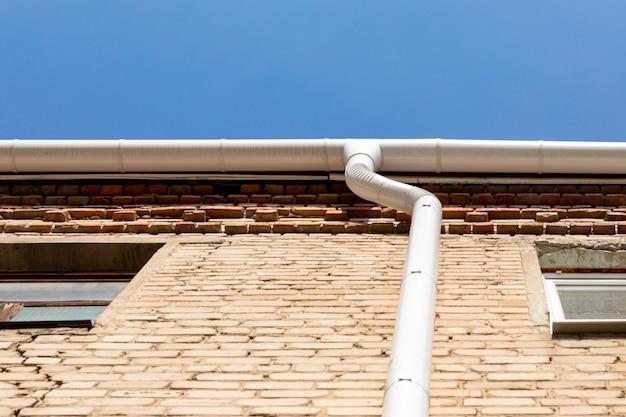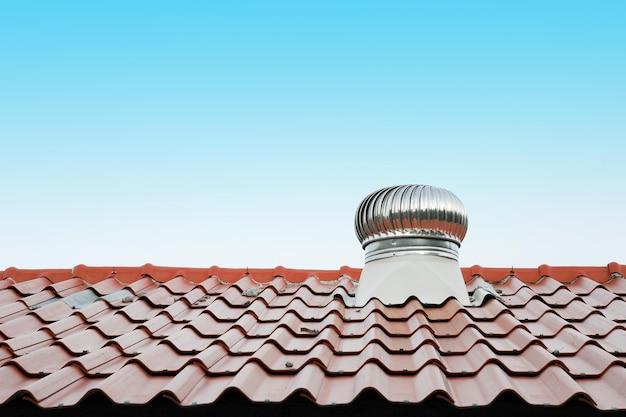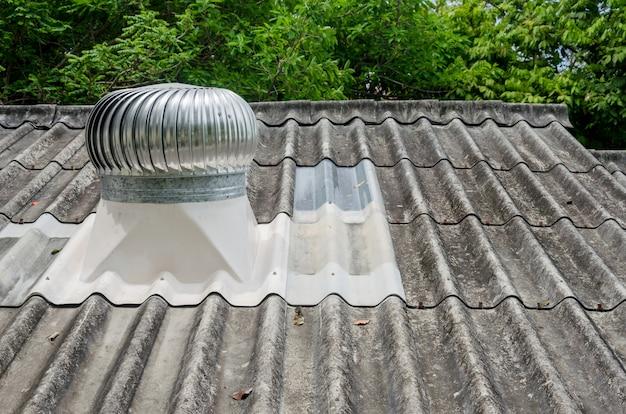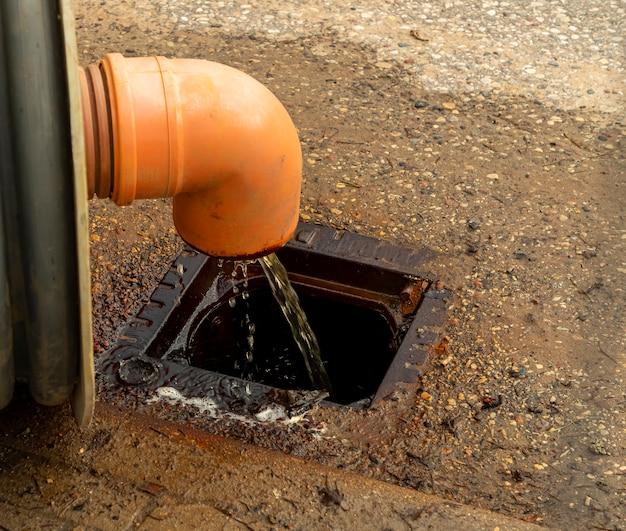Are you experiencing slow drains, gurgling pipes, or foul odors emanating from your plumbing system? If you suspect that your roof vent might be clogged, you’ve come to the right place. Don’t worry; you’re not alone in this mess! Many homeowners encounter this issue, especially those with tall buildings and multi-story homes.
The roof vent is an essential component of your plumbing system. It regulates air pressure, allows wastewater to flow freely, and prevents sewer gases from entering your home. However, when the vent becomes clogged, water and waste can’t escape, causing slow drainage and backups.
To clear the clog, professional plumbers typically use a plumbing snake, also known as an auger. The snake is inserted through the roof vent pipe and extends into the sewer line, removing the obstruction. But can you do it yourself, and what are the risks?
In this blog post, we’ll explore the reasons why a roof vent can become obstructed, the signs that indicate it’s clogged, and the steps you can take to clear it. We’ll also discuss how to prevent future clogs and when to call in the pros. So, sit back, relax, and let’s get started with unclogging your plumbing vent!
Snake Drain from Roof Vent: What You Need to Know
If you have a clogged drain vent, it can cause serious problems to your plumbing system. One of the most common and effective ways to unclog a roof vent is by using a snake drain. Here’s what you should know about this plumbing tool.
What is a Snake Drain
A snake drain is a long, flexible, and coiled wire that’s inserted into a clogged drain, pipe, or sewer line to break up and remove any blockages. It’s also called a plumbing auger or drain snake.
How Does it Work
To use a snake drain on your roof vent, first, you’ll need to locate the vent opening on your roof. Then, gently insert the snake down the vent until it reaches the blockage. Next, rotate the snake and push it in and out until it clears the obstruction. Finally, pull the snake out of the drain and check to see if the obstruction has been removed.
Types of Snake Drains
There are two main types of snake drains: manual and electric. A manual snake drain is a basic tool that’s operated by hand, whereas an electric snake drain is a more advanced and powerful tool that’s powered by an electric motor. Electric snake drains are faster and more efficient than manual ones, making them an excellent choice for larger and more stubborn blockages.
Tips for Using a Snake Drain
When using a snake drain on your roof vent, it’s essential to take the proper precautions to avoid damaging your plumbing. Here are some tips to follow:
- Wear protective gloves and eyewear to avoid injuries.
- Use a snake drain that’s appropriate for your plumbing system’s size and type.
- Always start with a manual snake drain and switch to an electric one if necessary.
- Avoid forcing the snake down the drain too hard, as this can damage the pipe.
- Regularly clean your drains and vents to prevent blockages from happening in the first place.
With these tips in mind, you can safely and effectively use a snake drain to unclog your roof vent and keep your plumbing system in top shape.
Drain Vent Pipe Location
If you’re looking to clean your roof vent snake drain, you must also know the location of the drain vent pipe. The drain vent pipe is an essential component of the plumbing and drainage system in your home, and it’s crucial to know its location to maintain and service it.
What is a Drain Vent Pipe
A drain vent pipe is a vertical pipe, usually made of PVC or cast iron, that redirects sewer gases and foul odors outside of your home. This pipe connects to the waste drainage system of your home and provides a path for air to enter and leave the plumbing system.
Where is the Drain Vent Pipe Located
The drain vent pipe runs vertically from the drainage system of your home, usually through your roof, and connects to the main sewer or septic system. It’s easily identifiable as a vent pipe that protrudes above the roofline.
Why is it Important to Know the Location of Drain Vent Pipe
Knowing the location of the drain vent pipe is crucial as it provides a clear indication of where to access and service the pipe. If you need to clean out the pipe, you’ll need to access the roof to locate the vent pipe. Additionally, it’s essential to know the location of the vent pipe to ensure it’s not blocked, which can result in slow drains or even sewage backup.
How to Identify the Location of the Drain Vent Pipe
Locating the drain vent pipe is relatively easy. You can simply look for a vertical pipe protruding above the roofline. The pipe is usually 3-4 inches in diameter and has a U-shaped bend (P-trap) at the base. The P-trap is designed to trap water and prevent sewer gases from entering your home. If you’re unsure, you can consult a professional plumber to help you locate the vent pipe.
Knowing the location of the drain vent pipe is crucial to maintain a healthy plumbing and drainage system in your home. It’s important to service and clean out the pipe regularly to ensure it’s functioning correctly and to avoid any unnecessary backups or blockages.
Cost to Unclog Plumbing Vent
If you’re considering hiring a professional plumber to snake your drain from the roof vent, cost is likely a concern. While the cost can vary depending on several factors, such as the location of the clog and the complexity of the job, the average cost to unclog a plumbing vent is between $100 and $300.
It can be tempting to try and tackle the problem yourself to save money, but keep in mind that if you don’t have experience or the right tools, you may end up causing more damage and costing yourself more money in the long run.
Factors that Affect the Cost
Several factors can influence the cost of snaking a drain from the roof vent. Here are some of the most common factors to consider:
Location of the Clog
The location of the clog can have a significant impact on the cost. If the clog is located in an easily accessible area, such as near the roof vent, the cost may be lower. However, if the clog is deep within the plumbing system or requires extensive excavation, the cost may be higher.
Complexity of the Job
The complexity of the job can also affect the cost. If the job requires extensive investigation or repair work, it may take longer and cost more. Additionally, if the job requires specialized equipment or expertise, the cost may be higher.
Time of Service
The time of service can also have an impact on the cost. If you need emergency service outside of regular business hours, such as on weekends or holidays, the cost may be higher.
While the cost to snake a drain from the roof vent can vary depending on several factors, it’s important to consider the risks of attempting the job yourself. In most cases, hiring a professional plumber is the safest and most cost-effective option.
Roof Drain Pipe Cleaning Near Me
Cleaning your roof drain pipe is an important task that should be done regularly to prevent water damage to your property. Your roof drain pipe is responsible for carrying water and debris away from your roof, so it’s essential to keep it clean and in good working condition.
Why is it important to clean your roof drain pipe
Your roof drain pipe can become clogged with debris such as leaves and twigs, which can prevent it from working correctly. When this happens, water can overflow from your gutters and cause damage to your property. Cleaning your roof drain pipe ensures that water flows correctly, reducing the risk of water damage.
How often should I clean my roof drain pipe
It’s recommended that you clean your roof drain pipe at least twice a year, during spring and fall. However, if you live in an area with many trees or experience heavy rainfall, you should clean it more frequently.
DIY vs. Hiring a Professional
Cleaning your roof drain pipe can be a DIY task if you have the right tools and knowledge. However, it can be a challenging and dangerous task, so it’s recommended that you hire a professional if you’re not confident in your abilities.
How to Find a Roof Drain Pipe Cleaning Service Near You
To find a professional roof drain pipe cleaning service near you, you can use search engines like Google and type in “roof drain pipe cleaning service near me.” You’ll get a list of companies that offer this service in your area. It’s essential to read reviews and check their credentials before hiring.
Cleaning your roof drain pipe is essential to prevent water damage to your property. It’s recommended that you do it regularly, at least twice a year. You can either do it yourself or hire a professional. To find a roof drain pipe cleaning service near you, use search engines like Google and read reviews before hiring.
Clearing a Clogged Drain from the Roof
If you’re experiencing slow draining water from your roof vent, you may have a clogged drain. Clearing a clogged drain from the roof can be a daunting task, but with the right tools and a bit of know-how, you can get the job done quickly and easily.
Step 1: Identify the problem
The first step to clearing a clogged drain from the roof is to identify where the blockage is. If you notice water is pooling on your roof or not draining correctly from your gutters, it’s possible that there’s a clog in the drainpipe or gutter.
Step 2: Inspect the roof vent
The next step is to inspect the roof vent and drainpipe. Look for any debris, such as leaves or twigs, that might be blocking the flow of water. Using a flashlight can be helpful to look inside the vent and check for any other obstructions.
Step 3: Use a snake drain
If you’re sure there’s a clog in the drainpipe, use a snake drain to remove the blockage. A snake drain is a tool that can be inserted into the drainpipe to break up any debris and allow water to flow freely. Simply insert the tool into the pipe and twist it until it reaches the blockage. Then twist it back and forth to break up the clog.
Step 4: Flush the drain
Once you’ve broken up the clog using the snake drain, it’s time to flush the drain. Run water from a hose or bucket down the drainpipe to wash away any leftover debris. This step will ensure that your drainpipe is completely clear and free from obstructions.
Clearing a clogged drain from the roof is a relatively easy task that can be completed quickly with the right tools and know-how. By following the steps outlined above, you can ensure that your roof is free from obstructions and water is flowing freely through your drainpipe. If the problem persists after trying these steps, it’s best to contact a professional who can help you diagnose and resolve the issue.
Can You Snake a Drain from the Vent Pipe
When faced with drain blockage problems, many people are often unsure of the best solution. One common question people ask is whether they can snake a drain from the vent pipe. Here’s what you need to know:
Understanding the Vent Pipe’s Role in Plumbing
The vent pipe is an essential component of plumbing that ensures proper drainage and relieves pressure in the system. Its primary function is to provide an opening for air to circulate freely in the plumbing system. This is essential in maintaining the balance of air pressure in the drainage and sewer pipeline. Without vent pipes, the wastewater would not pass through the pipes and may back up into sinks, tubs, and toilets.
Can You Snake a Drain from the Vent Pipe
The short answer is yes; it’s possible to snak a drain from the vent pipe, but it’s not the best solution. While snaking a drain from the vent pipe may clear the blockage, it doesn’t necessarily address the root cause of the problem. Additionally, improper use of a drain snake can cause damage to the vent pipe, leading to more problems.
Better Alternatives to Snaking a Drain from the Vent Pipe
Instead of snaking the drain from the vent pipe, we recommend that you use the right tools and methods to address the blockage and prevent further problems. Here are some tips:
- Use drain cleaners that are safe for your pipes.
- Remove and clean the drain trap if clogged.
- Use a plunger to clear a toilet or shower drain.
- Consider hydro jetting to clean your drainage and sewer pipeline.
If these methods don’t work, we suggest contacting a plumber to identify and address the root cause of the blockage. They have the experience and tools needed to fix the problem adequately.
While snaking a drain from the vent pipe may be possible, it’s not always the best solution. It’s essential to understand the importance of the vent pipe in plumbing and take appropriate measures to address the root cause of the problem. Remember to use safe and effective tools and call a plumber if necessary. With these tips in mind, you can maintain a functional and trouble-free plumbing system.
How to Unclog Plumbing Vent Without Getting on Roof
Clogged plumbing vents can cause unpleasant odors, slow drainage, and even sewer gas backup. Fortunately, you don’t need to climb on your roof to unclog your plumbing vent. Here are a few easy tips to unclog your plumbing vent without risking your safety.
Check for Obstructions
If you have slow drainage or sewage backup in your bathroom, kitchen, or laundry room, the first step to unclog your plumbing vent is to check for obstructions. You can do this by shutting off all the taps in your home, then flush a toilet and listen for gurgling sounds. If you hear gurgling sounds, there’s likely an obstruction in your plumbing vent.
Use a Garden Hose
One of the most effective ways to unclog your plumbing vent without getting on your roof is to use a garden hose. All you need to do is locate the vertical vent pipe on your roof and direct a garden hose into it. Turn on the hose and let it run for several minutes until the water flows freely.
Use a Plumbing Snake
Another effective method to unclog your plumbing vent is to use a plumbing snake. To use a plumbing snake, insert the snake into the vent pipe and turn it clockwise until you hit the obstruction. Then, push and pull the snake until the obstruction loosens and clears the vent pipe.
Chemical Drain Cleaners
Using chemical drain cleaners is another way to unclog your plumbing vent without climbing on your roof. However, it’s essential to use this method only as a last resort, as most of these chemicals can be dangerous. It’s also crucial to use the chemicals as directed by the manufacturer, and avoid mixing different cleaners.
Unclogging your plumbing vent can bring back the functionality of your home’s plumbing system. With these easy tips, you can save yourself the risk of climbing on your roof to clear the obstruction. Remember to be cautious and use safe methods when clearing your plumbing vent.
How to Clean a Drain Through a Roof Vent
Cleaning a drain through a roof vent might seem like a daunting task, but with the right tools and know-how, it can be done easily. Here are the steps to follow:
Step 1: Locate the Roof Vent
The first step in cleaning a drain through a roof vent is to locate the roof vent. Typically, the roof vent is a small, round, or square pipe protruding from your roof. Once you locate the vent, you can begin the process.
Step 2: Inspect and Remove the Roof Vent Cover
Inspect the roof vent to see if it is covered with debris or leaves. If there is debris covering the roof vent, remove the cover to clear the way for the drain cleaning. Depending on the type of roof vent you have, you may need a screwdriver or a flathead to remove the cover.
Step 3: Feed the Snake Down the Drain
A plumbing snake is your secret weapon to clean a roof vent drain. Insert one end of the snake into the vent, and with gentle pressure, feed the snake down the drain. Twist the handle as you go to help the snake navigate the bends. Be careful not to push the snake too hard, or it might get stuck.
Step 4: Remove Debris
As you feed the snake down, you will start to feel resistance when it reaches the debris. Continue to gently push the snake further to help remove debris causing a blockage. When the end of the snake reaches the blockage, rotate the handle to pull out any accumulated debris. Repeat until you remove as much debris as possible.
Step 5: Flush the Drain
After removing debris, flush the drain with water to ensure proper drainage. If the water drains smoothly, the clog has been successfully cleared.
By following these steps, you can clean a roof vent drain with ease. If you are not confident with DIY plumbing repairs, consider seeking help from a professional plumber. They can help you clean your roof vent drain or any other drain issues you may have.
Does a Drain Vent have to go Through the Roof
When it comes to plumbing systems, most homeowners do not know much about it and would usually rely on the experts. However, some basic knowledge can help you keep your plumbing system in good condition. One question homeowners ask is whether a drain vent has to go through the roof.
What is a Drain Vent
First off, let’s define what a drain vent is. The plumbing system in your home has a series of pipes that remove waste and water. When water flows down your sink or toilet, it creates a vacuum that could prevent waste from going down and cause a blockage. A drain vent provides air to allow water to flow freely into the pipes.
Why Does it have to be on the Roof
The reason for placing the drain vent on the roof is to prevent blockages and harmful gases from entering your home. Placing the drain vent on the roof allows it to rise above your home and allows harmful gases like methane to escape into the atmosphere instead of staying in your home, causing health hazards.
Can it be Placed Somewhere Else
While drain vents are usually found on the roof, it is not always necessary for them to be in that location. However, if you need to place it somewhere else, you will need to ensure that it still provides the same function and does not cause harm to anyone or anything. You should consult with an expert to determine the best location for your drain vent.
In summary, a drain vent is an essential component of your plumbing system and must be installed correctly to allow waste and water to flow out of your home smoothly. Although it is usually placed on the roof, it is not a requirement, but you must ensure that placing it somewhere else will not cause any harm to you or your environment. Remember, if you have any doubts, always consult an expert to ensure your plumbing system functions correctly.
How Do I Know if My Roof Vent Pipe is Clogged
When your roof vent pipe is clogged, it can cause serious issues for your plumbing system. Here are some signs that your roof vent pipe is clogged:
Slow Drainage
Slow drainage is one of the most common and easily noticeable signs of a clogged roof vent pipe. If you notice that water is taking longer to drain from your sink, shower, or tub, this could be a sign that your roof vent pipe is clogged.
Gurgling Sounds
Another sign that your roof vent pipe is clogged is the presence of gurgling sounds in your plumbing system. When air cannot flow through the roof vent pipe, it can cause a vacuum effect that leads to strange sounds coming from your pipes.
Bad Odors
A clogged roof vent pipe can also cause bad odors in your plumbing system. If you notice a foul smell coming from your drains, this could be an indication that there is a blockage in your roof vent pipe.
Water Backup
If your roof vent pipe is completely clogged, it can cause water backup in your home. This can lead to water damage, mold growth, and other serious issues.
In conclusion, if you notice any of these signs, it’s important to address the issue as soon as possible. A clogged roof vent pipe can lead to serious plumbing problems, and fixing it quickly can save you time and money in the long run.



